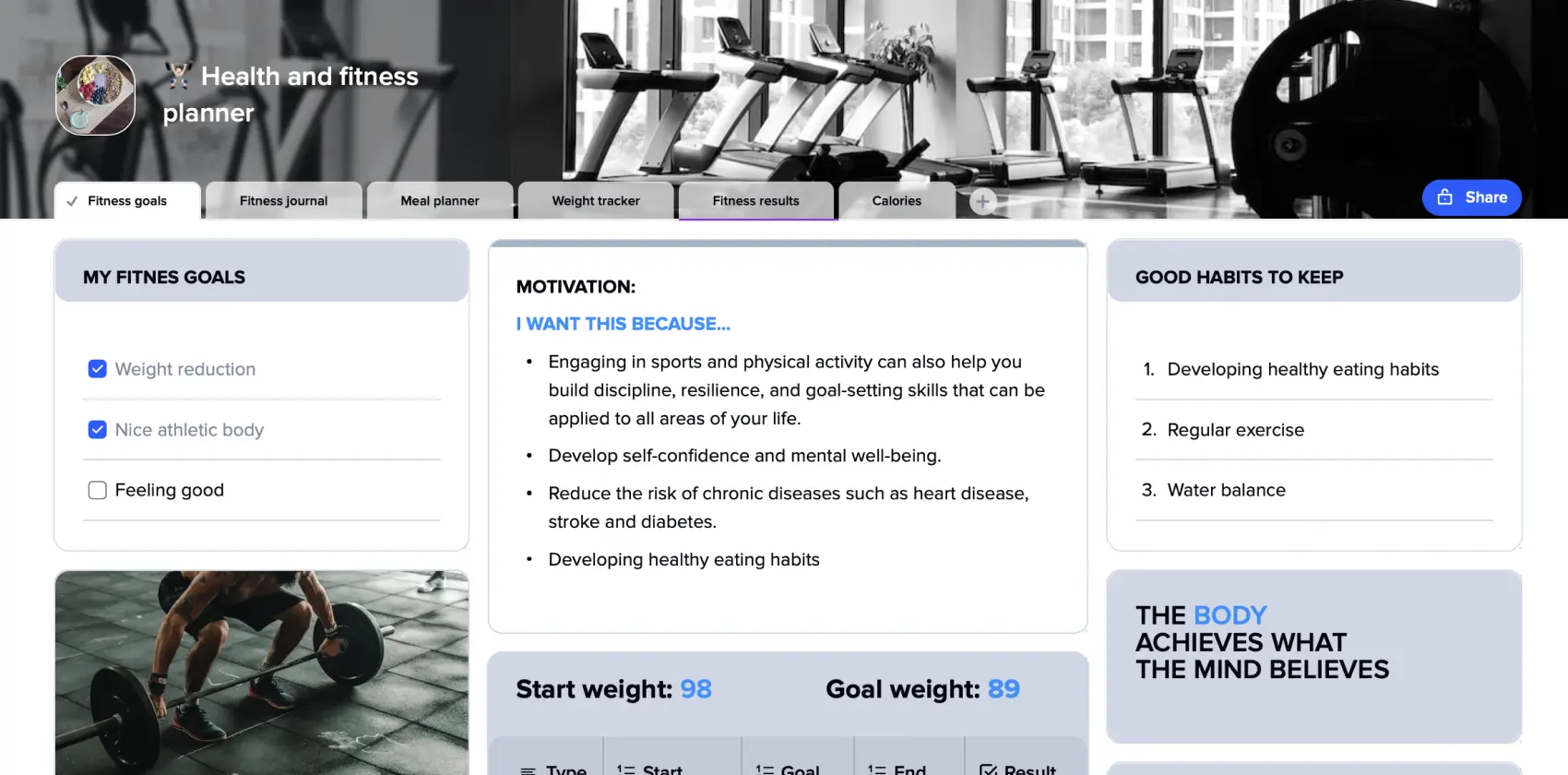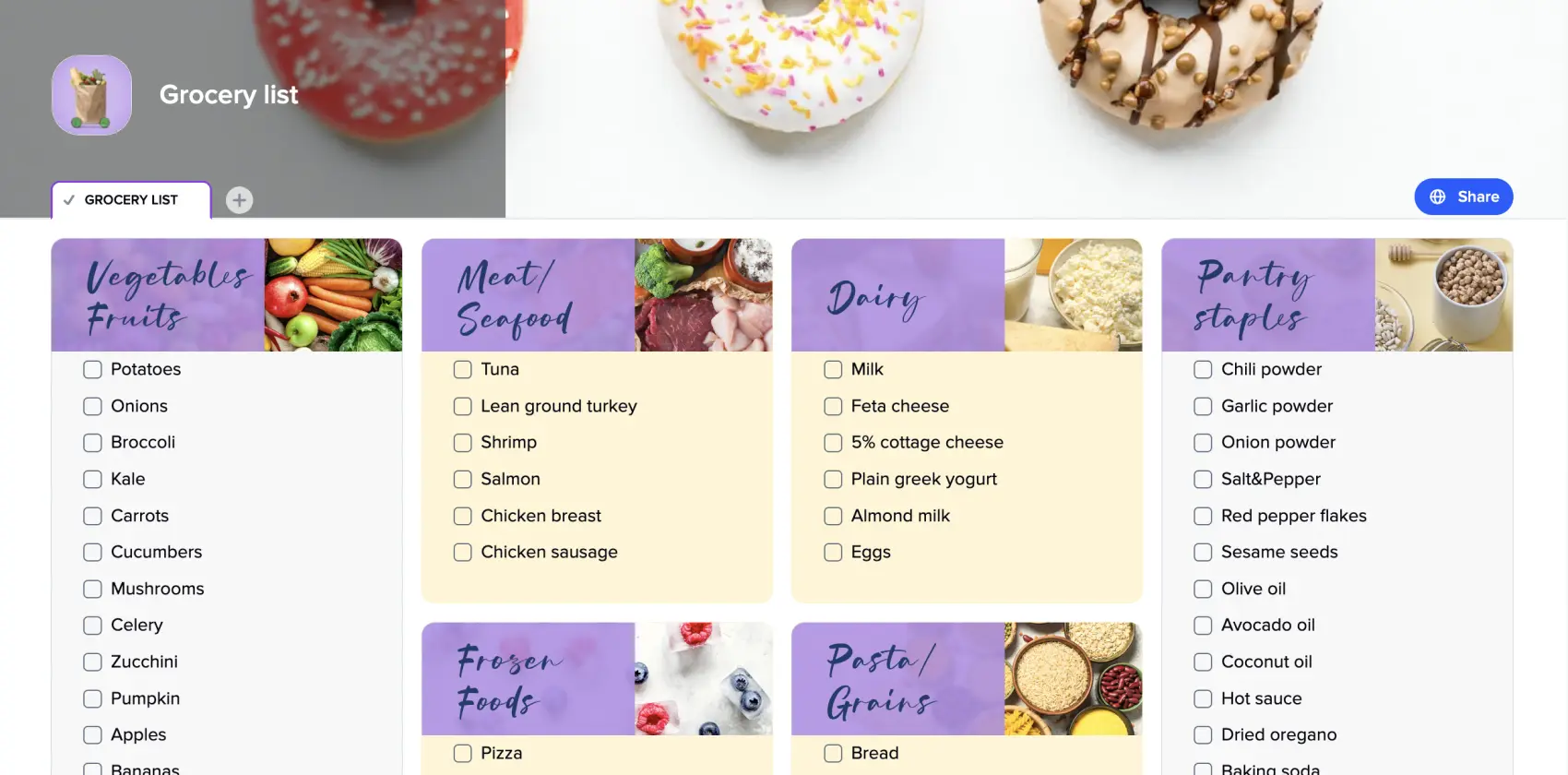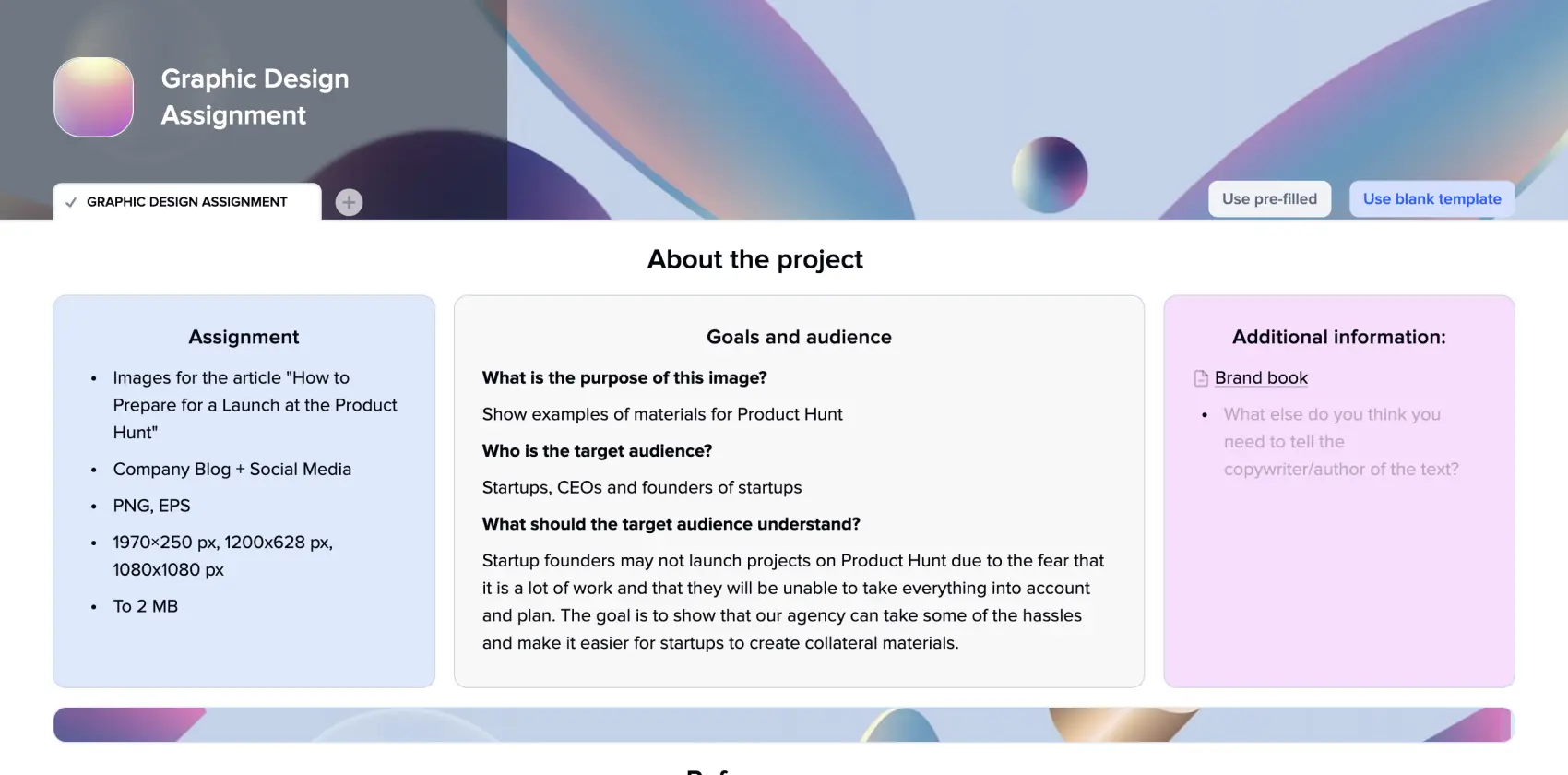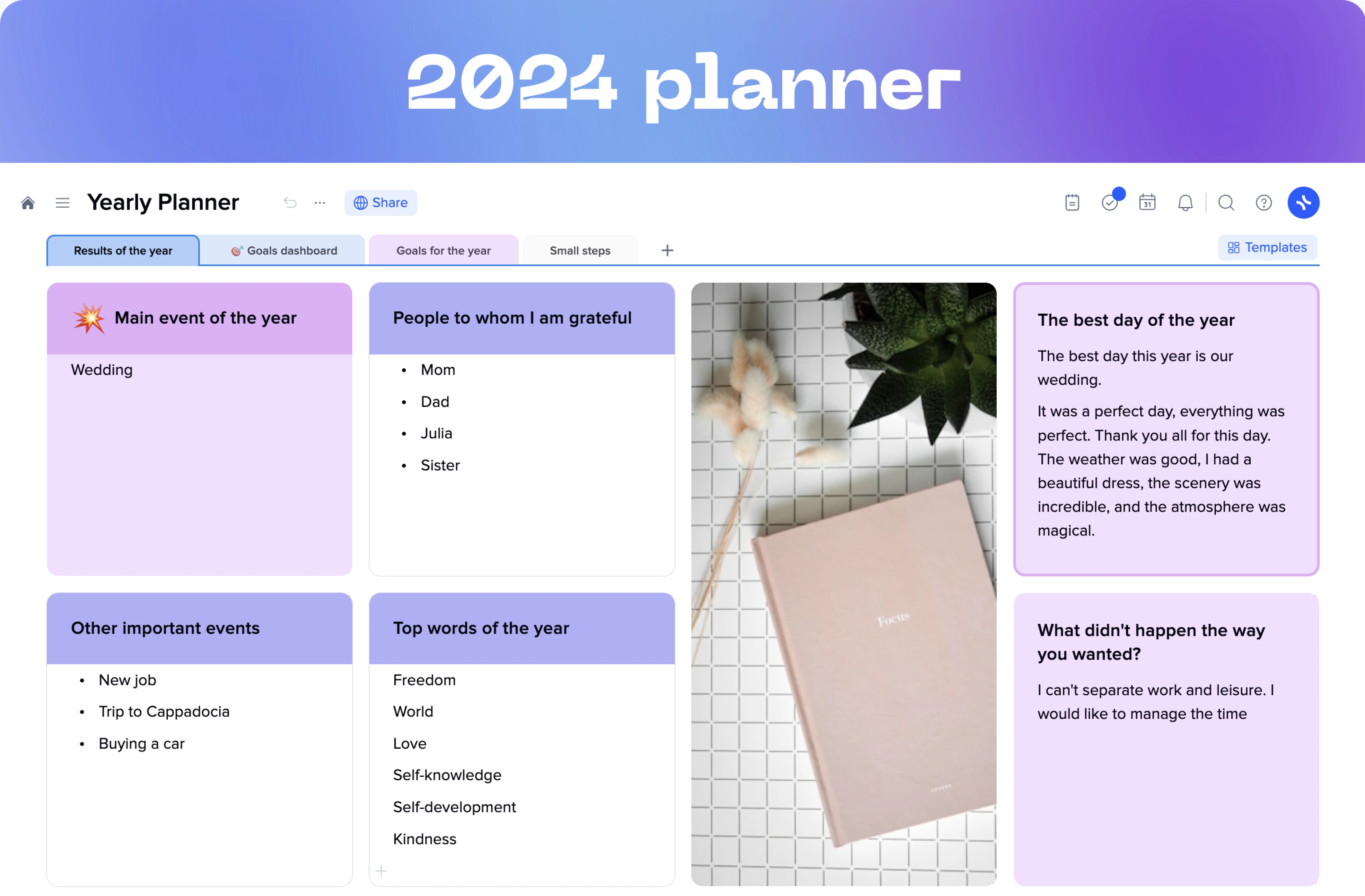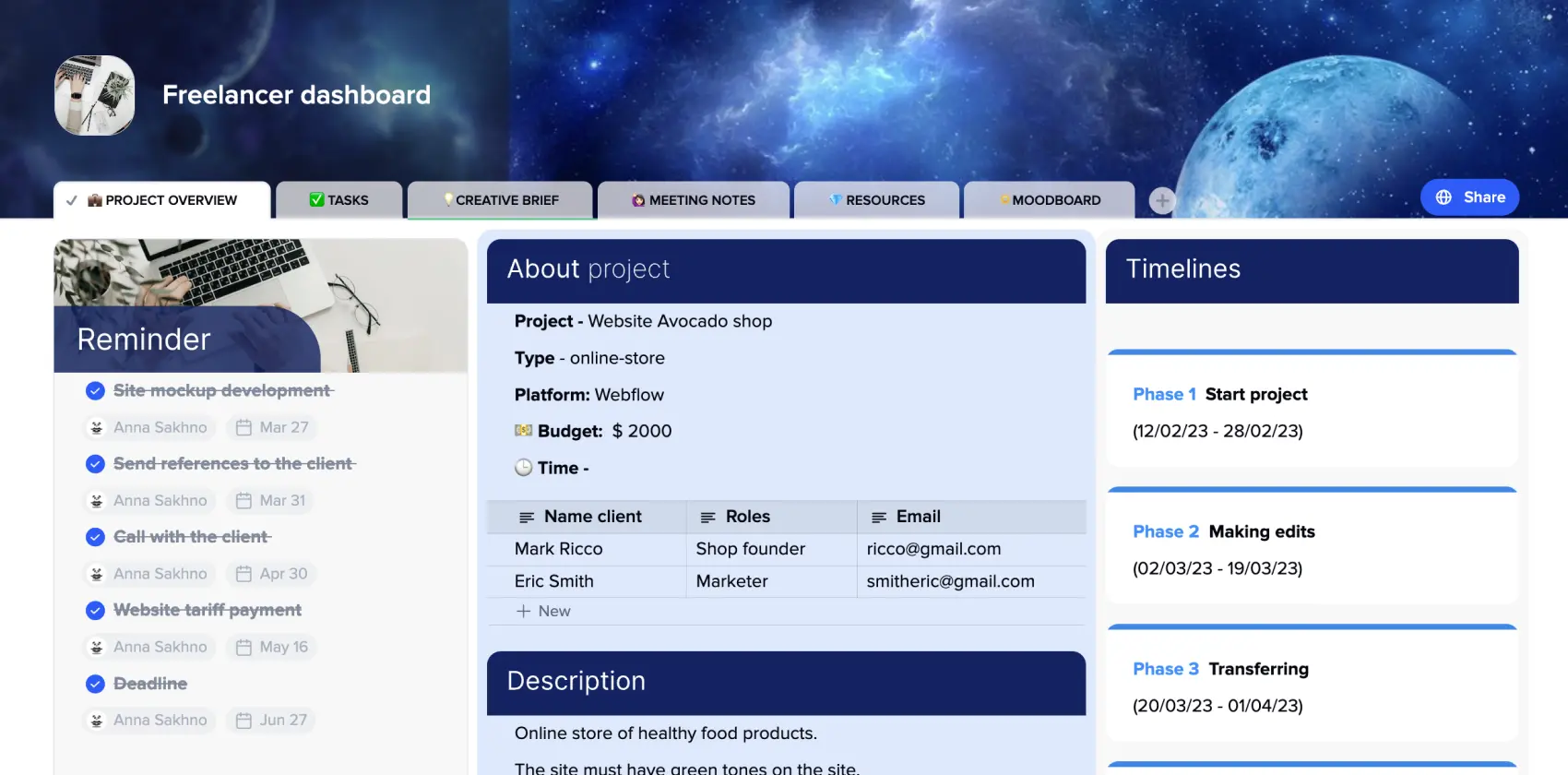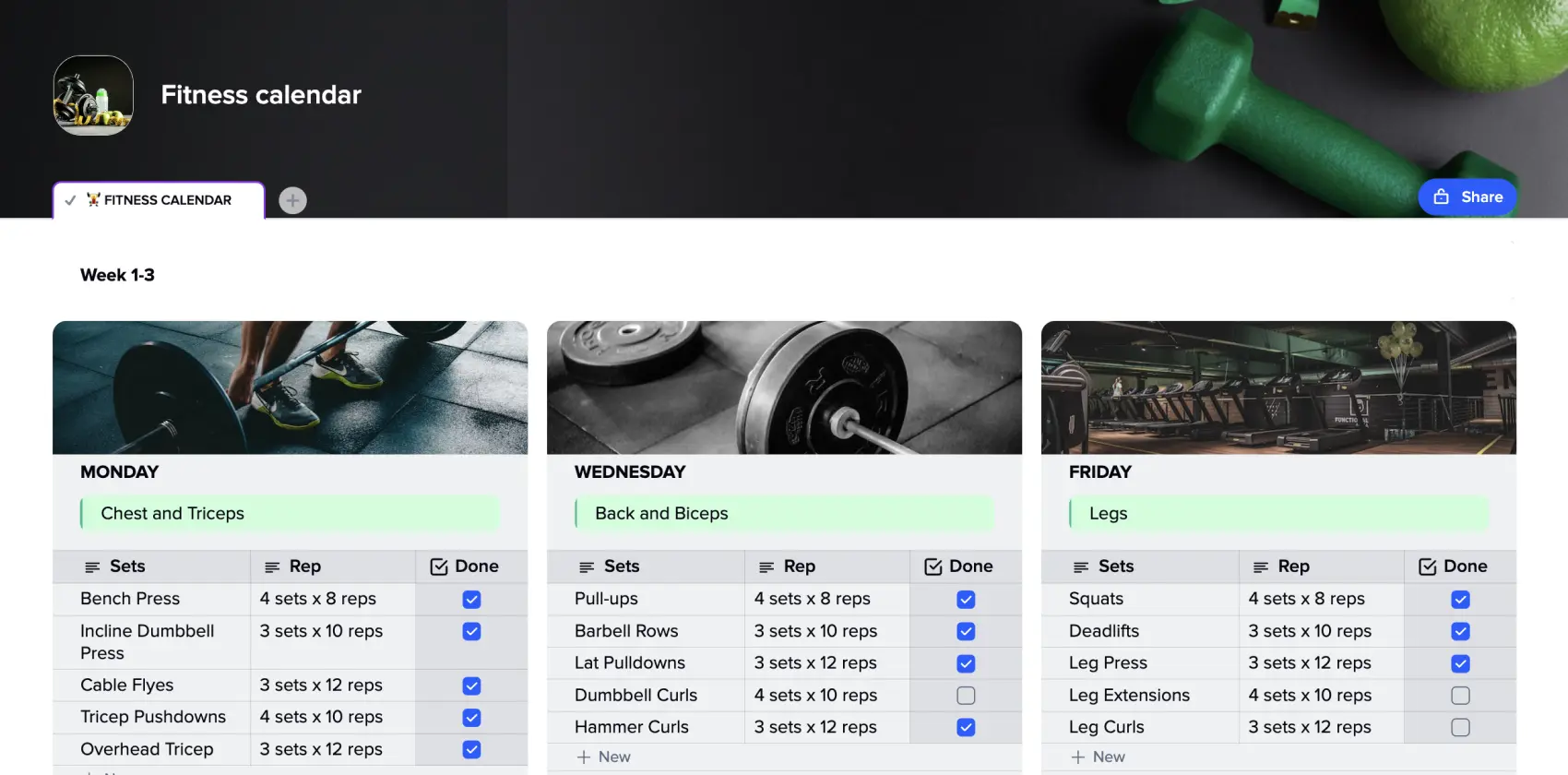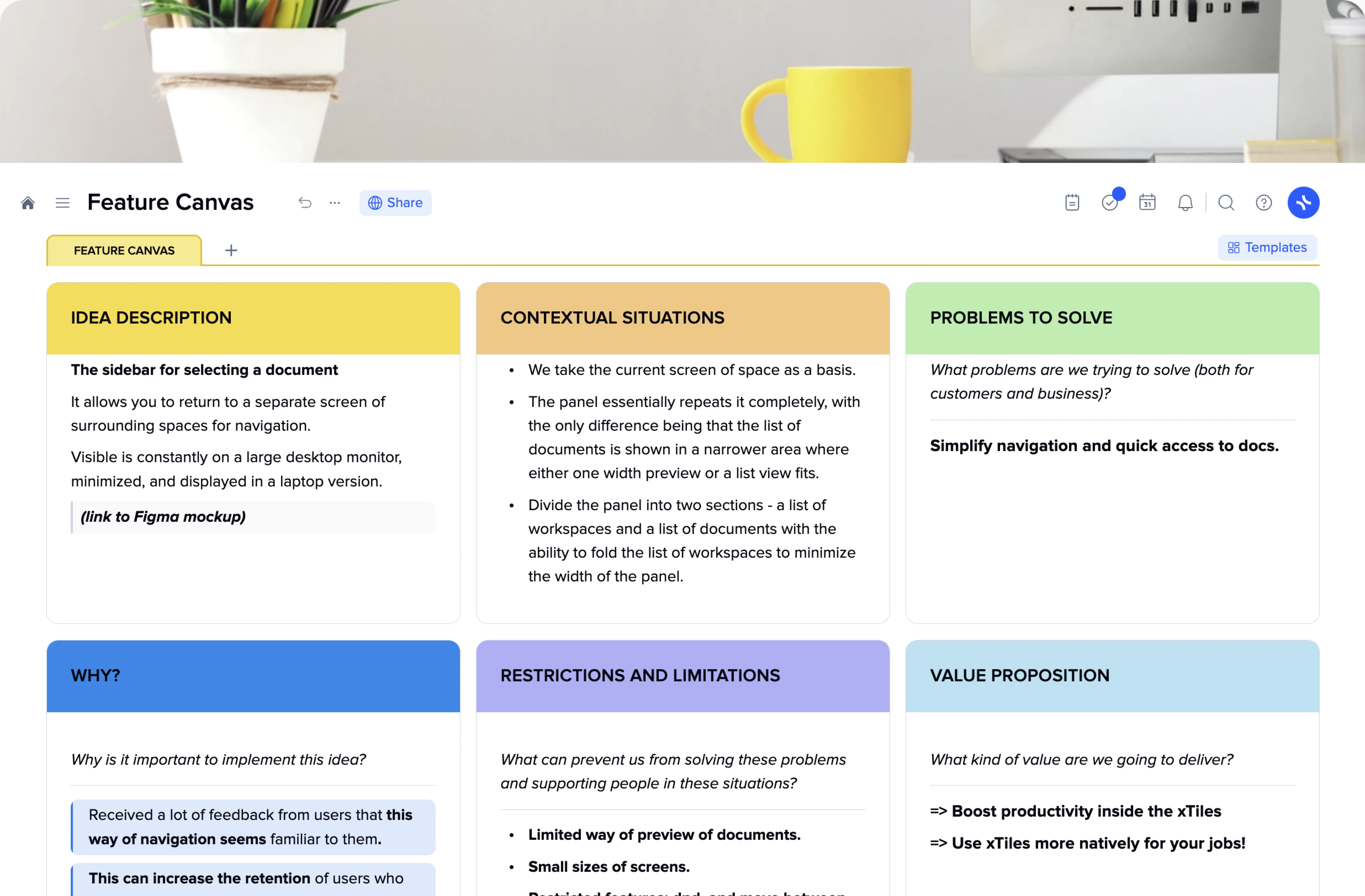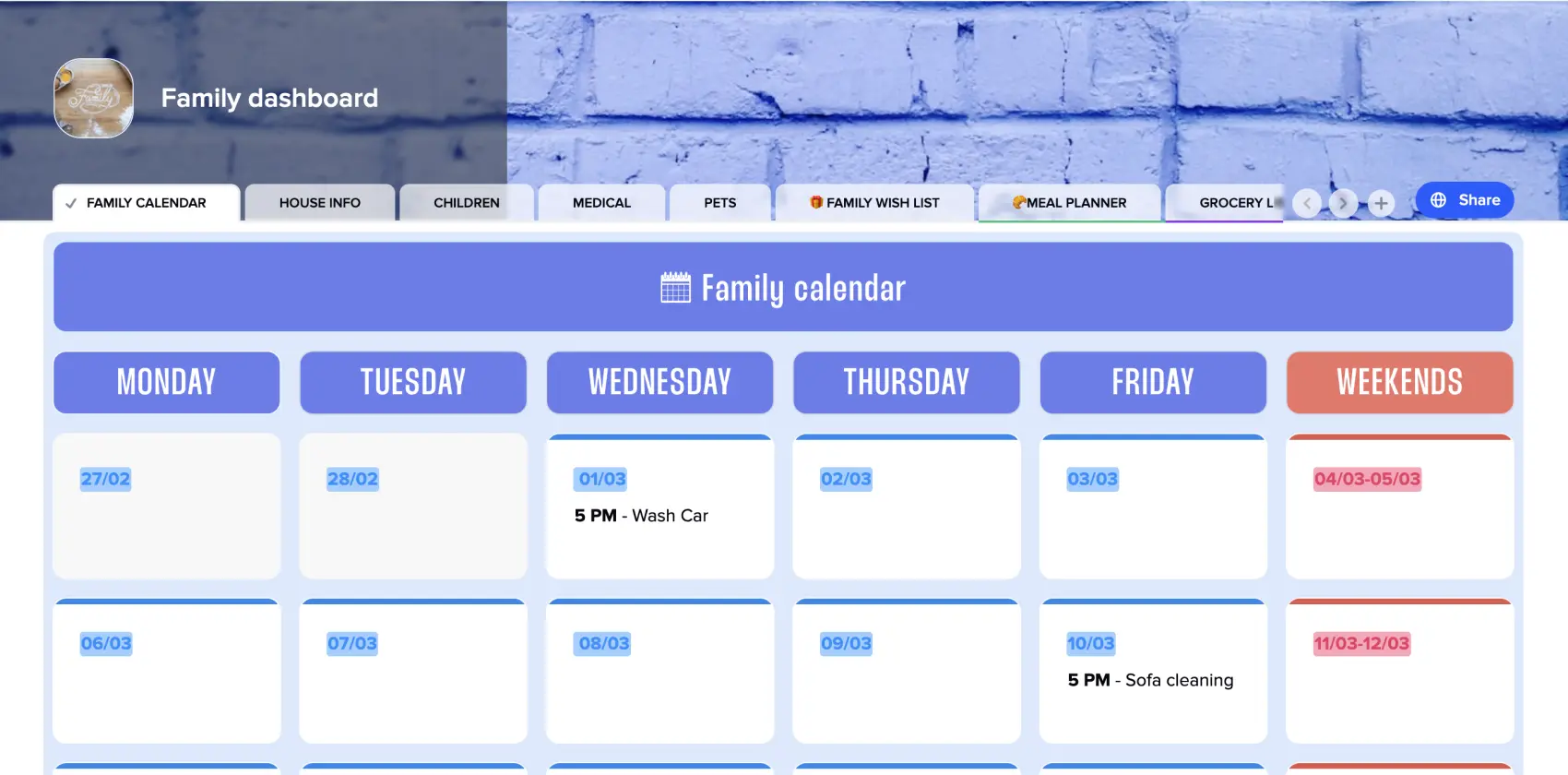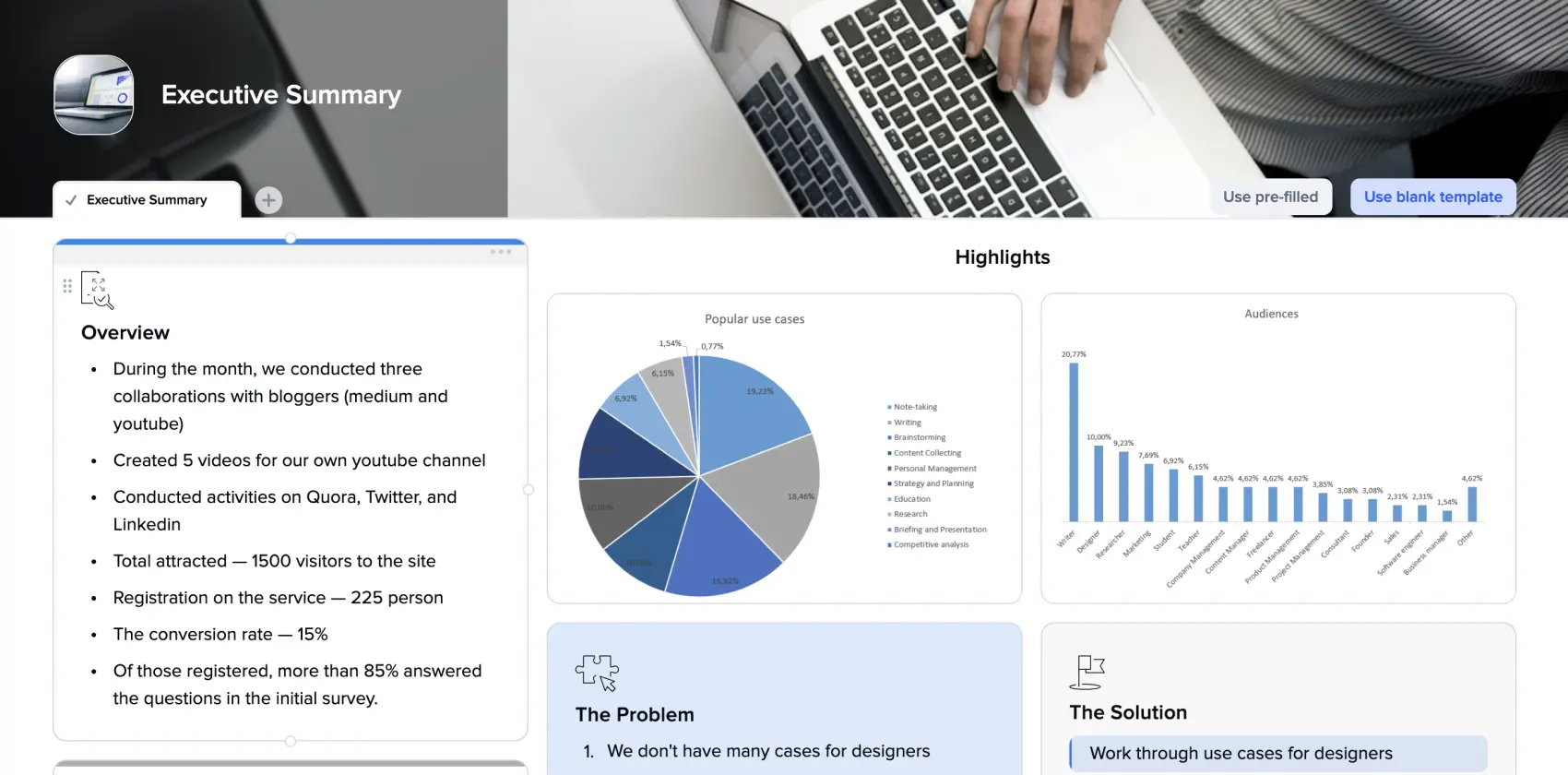The most common reason people quit working out is losing motivation. That can happen when no progress is visible or when the training is too hard. That means there was a problem at the beginning they could prevent or resolve if they planned their fitness activity more thoroughly according to their shape and abilities. How is that possible?
A fitness plan guides people on their fitness journey, considering their unique needs and current physical shape. By allowing for customization, fitness plans help people ensure growth and development in a healthy, non-traumatic way.
A fitness planner template is a pre-designed framework to help you quickly yet fully track your fitness activity and progress, plan your training sessions and meals, and learn to understand yourself and your body better.
The xTiles Health and Fitness Planner Template helps keep control over every aspect of your fitness journey in relation to your health and well-being in one place. The template can be tailored to fit your specific needs 100% by allowing for easy customization.
What is a fitness plan?
A fitness plan is a personalized schedule of exercises designed to help individuals achieve their fitness goals. The key point about fitness plans is their flexibility and, as a consequence, uniqueness. In other words, how many people, so many fitness plans.
There are many factors to consider before creating a personal fitness planner, and it’s always easier and quicker to do it with a trainer. Trial and error methods will probably lead you to your goal as well. Yet, the road might be much longer because you will need to learn much about yourself, the human body, physical activities, meal planning, macro and micronutrients our bodies need, etc.
The essential factors to take into account are weekly availability and your body type. When a person clearly understands the time they can dedicate to exercise without impacting other spheres of their lives and acknowledging their body’s capabilities, they can create a plan that fits seamlessly into their lifestyle and maximizes their chances of reaching success.
The exercises in a fitness planner will vary depending on its owner’s desired outcome. Whether your goals revolve around improving cardiovascular health, building strength and muscle, increasing flexibility, or combining these aspects, your fitness plan can be tailored accordingly.
Your fitness program’s effectiveness depends on whether you consider your current fitness level, existing health conditions, and available resources for regular exercising or not. If you’re working on your weight loss fitness planner with your trainer, be honest about everything that might impact your results, like binge-eating habits, low physical activity during the day, chronic diseases, etc. If you work on your fitness planner on your own, be honest with yourself too. Don’t overestimate your abilities, especially if you’re a newcomer.
The truthful information helps in selecting exercises that are appropriate for your starting point and can be safely executed. They ensure you feel comfortable while exercising while giving 100%. The more demanding and challenging your fitness plan is, the higher are chances of quitting.
The exercises incorporated into a fitness plan can be of any kind. Don’t like jumping? There are plenty of effective exercises where you don’t have to jump. Like doing your exercises while lying on the floor? There still are plenty of these that will help you reach the desired goal.
You may choose from simple activities like walking or jogging to more complex and challenging routines like weightlifting or high-intensity interval training (HIIT).
A well-rounded fitness plan often includes a combination of exercise types to target different aspects of fitness, providing a balanced and comprehensive approach while keeping your training activities exciting for you.
The moment you start turning your head around to check on different objects in the room, your training session becomes boring, and it would be better to adjust your fitness planner a bit if you still want it to be effective. The xTiles Fitness Planner is easily adjustable, so you can edit it after every workout if you think there’s a need.
It’s important to remember that a fitness plan is not a one-size-fits-all solution. It should be tailored to your unique needs, preferences, and goals. Regular evaluation and adjustment of the plan are essential as you progress and your fitness levels improve. By following a well-designed fitness plan, you can stay motivated, track your progress, and work steadily towards achieving the desired results.
Why do people need to have fitness plans?
A fitness plan is crucial for your fitness journey for several reasons, even if you’re fully intent on listening to your body and its needs only.
A good, tailored to your needs and abilities fitness plan serves as a roadmap that guides you toward your dreams and goals, providing a detailed outline of the steps you need to take. When you only start your journey, it’s quite easy to miss something, go the wrong way, and start hating fitness.
Additionally, when you don’t execute a well-structured plan, it’s easy to lose focus, motivation, and willpower, making it more likely to succumb to temptations like skipping workouts or deviating from your fitness routine, no matter whether you started a week ago or years ago.
Every plan starts with writing down your goals and creating specific objectives (or at least it should) so you gain clarity and direction. It helps you define what you really want to achieve and creates a tangible target to work toward.
A big goal like losing weight or getting 6-pack abs may feel overwhelming. Breaking it down into smaller, actionable steps allows you to focus on the immediate tasks. This way, you can track your progress and celebrate achievements after every small step, which may become a powerful motivator.
A well-designed fitness plan outlines each step necessary to reach your desired outcome. It serves as a reminder of what you want to achieve and as a record of how far you have come.
How to create the best fitness plan using xTiles Health and Fitness Planner Template?
Creating a fitness plan is essential for your fitness success. However, it may be quite daunting for people with no previous exercise experience due to the vast amount of information available on the internet, not always provided by certified professionals, which might misguide them.
That’s why a fitness planner template is a great tool to make the process much easier and faster. Its pre-designed sections and pages help you not overlook any aspect of your fitness journey, such as meal planner, calories, macro and micronutrients, weight tracker, etc.
We also offer a quick guide on creating a personal fitness plan to help you maintain consistency and motivation throughout your fitness journey.
1. Estimate your physical shape and health
Evaluate your current fitness level. Before formulating a fitness plan, it’s crucial to assess where you currently stand in terms of physical fitness. Reflect on your abilities and limitations in various physical activities. While there are several tests and assessments available to determine your fitness level, if you’re reading this, it’s likely you’ve already made the decision to enhance your fitness and are now seeking to create a plan.
Take into account your cardiovascular health. Can you ascend a flight of stairs without feeling breathless? Do you find it easy to walk short or long distances? If these activities present challenges, improving your heart and lung function could become a primary objective.
Consider your strength. Are you able to effortlessly lift weights of 20, 30, or even 50 pounds? Can you perform push ups with ease? If not, building strength in your upper body might be a goal worth pursuing.
Evaluate your flexibility. Can you comfortably touch your toes or even reach your knees when bending over? If not, enhancing your flexibility could be another important goal to include in your fitness plan.
2. Set measurable and realistic goals
Setting goals that can be achieved is essential for every new project, and a fitness regimen is no exception. Otherwise, you will simply be disappointed after all the hard work you’ve done.
You may focus on broad goals, such as overall health improvements. For example, you may set goals like meeting the recommended 150 minutes of physical activity per week by taking a 30-minute walk on five days. Or you may try to do 10K steps every day. In other words, no matter how small your goal is, it is still important to move toward it, and once you’re there, you need to be proud of yourself.
Gradually increase your mileage over time, and some training programs even allow for walking intervals. With consistent effort, you’ll steadily progress toward crossing the finish line.
3. Track your progress
Tracking your progress is important for keeping your motivation steady. However, taking your body measurements every day might be a bad idea to take your body measurements every day since progress is never linear. For example, some days, you simply might be just bloated, and it might seem that the situation is getting worse.
You may take comprehensive body measurements and keep a record of them to monitor your progress. Before and after pictures can serve as positive reinforcement as well, showcasing the changes you’ve made. The weight tracker page on your xTiles Health and Fitness Planner will help you track your changes.
4. Plan and schedule your workouts
Develop a plan that outlines specific workout days, the timeline to reach your fitness goals, and the strategies you will employ to accomplish them.
It’s important to allow yourself sufficient time to achieve your goals. Depending on the nature of your goal and various health-related factors, success may not come immediately. It is essential to manage your expectations while committing fully to the process.
5. Plan your meals
Your diet has a huge impact on your fitness results. That’s why planning it will bring only benefits.
Are you often confronted with the frustrating “What to have for dinner?” Many people experience this predicament every day. As a result, deciding what to cook based on your available groceries may feel like a mission impossible and might lead to bad decisions.
A takeout is often an option that immediately takes the burden of concocting a whole meal of two carrots and an egg away from your shoulders. However, you can’t know all the ingredients that were used, how many calories the meal contains, and how much protein, fat, and carbs you consume. The solution lies in the practice of meal planning.
6. Stick to your plan and celebrate each success
Sticking to your plan is also about adjusting it to your needs. Change your fitness plan whenever you feel that your current activity doesn’t feel good for you.
It’s important to be in alignment with how you feel. Not all days are the same, and sometimes you simply can’t run 3 miles even though you did it yesterday. Rest is an important requirement for growth.

